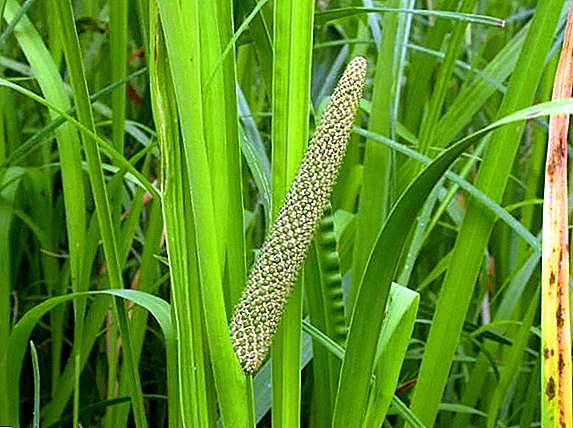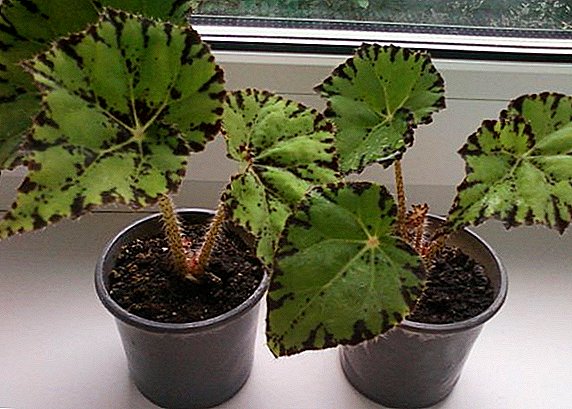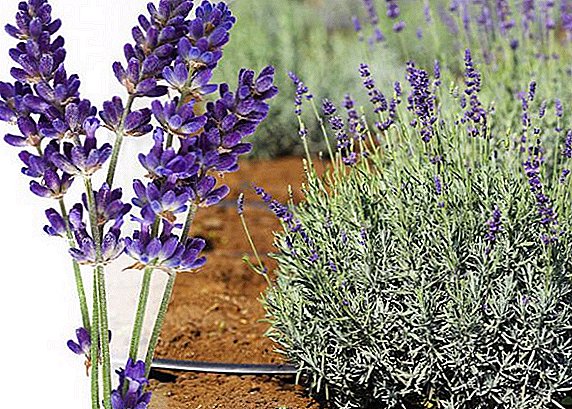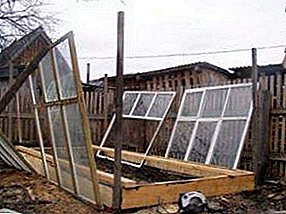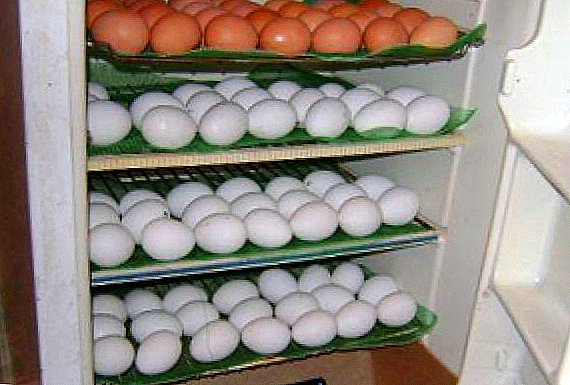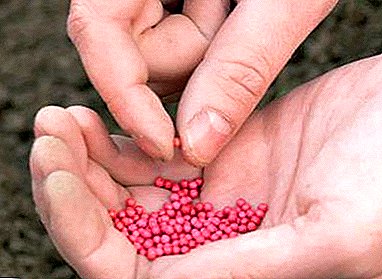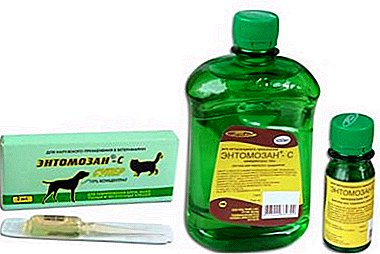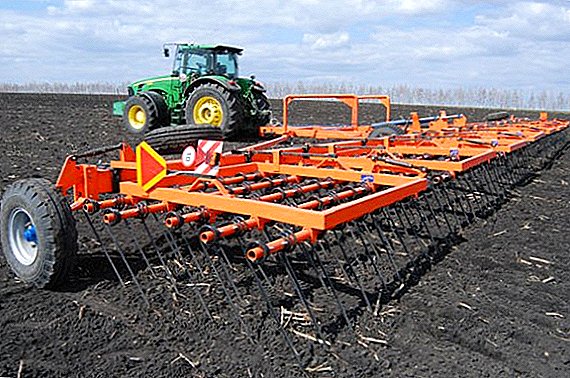 Harrowing is considered to be the most massive, efficient, productive, universally accessible and cost-effective method of growing crops. In order to plow your land plot carefully and correctly, familiarize yourself with the nuances of the procedure.
Harrowing is considered to be the most massive, efficient, productive, universally accessible and cost-effective method of growing crops. In order to plow your land plot carefully and correctly, familiarize yourself with the nuances of the procedure.
What is it for?
Harrowing - this is an agrotechnical measure of loosening the soil surface by harrows or rotary hoes. The technology protects the soil from drying out, selectively mixes and levels the outer layer of the soil, destroys the soil crust, destroys weeds and thinns out the thickened shoots of plants.
Harrowing is used in the system of pre-sowing soil cultivation, in the care of pastures and crops of agricultural land. This operation is carried out separately or synchronously with plowing and rolling.  The depth of soil cultivation depends on the steepness of the harrow teeth, its weight and speed. Heavy tine harrows cultivate soil at a depth of 6–10 cm, medium ones at a depth of 4–5 cm, and lightweight — 2–3 cm. As a result of loosening, a system of capillary coordination breaks down and a loose soil layer is created that does not dry out. Smoothed topsoil facilitates the process of embedding seeds, making it uniform.
The depth of soil cultivation depends on the steepness of the harrow teeth, its weight and speed. Heavy tine harrows cultivate soil at a depth of 6–10 cm, medium ones at a depth of 4–5 cm, and lightweight — 2–3 cm. As a result of loosening, a system of capillary coordination breaks down and a loose soil layer is created that does not dry out. Smoothed topsoil facilitates the process of embedding seeds, making it uniform.
Did you know? The loam is considered the easiest to process and fertile soil. The loam combines all the advantages of other soils, among which are porosity, lightness and the ability to retain maximum moisture.
The timing of harrowing are distinguished:
- Agrotechnical measures in the early spring period. Spring harrowing is done in order to block moisture (zyabi and black steam). Works begin with the onset of the physical ripeness of the earth. In regions with a sufficient level of moistening, fever and vapors are treated with tine harrows, in anhydrous zones - with needle-like ones.
- Processing of winter crops and perennials. Harrowing in this case revitalizes microbiological processes. Light and medium harrows or rotary hoes are used.
- Presowing cultivation. Preseeding harrowing is carried out by tooth harrows and is often combined with cultivation. In the southern steppe zone, surface treatment of the soil for sowing winter crops with heavy disk tools is widely used. Harrowing is also done on well-cultivated lands. When sowing winter crops harrows are connected with a seeder.
- Post sowing harrowing. Post-seeding processing is divided into pre-emergence and post-emergence. With pre-emergence harrowing, 80-90% of seedlings and seedlings are destroyed before the appearance of real leaves. Following the emergence of seedlings, cereals are processed during the rooting period. Circumference hoes, light tooth, mesh and weeding harrows are used.
- Summer processing of clean and rocker vapors. This harrowing of clean and rocker vapors is carried out with the compaction of the soil surface or the emergence of weeds. Half-harrowing is combined with plowing, cultivation or shelling. For better processing and smoothing of the soil, loosening is carried out across the direction of plowing, sowing rows or along the field line, using tone or diagonal methods of movement mechanisms. Small areas of irregular shape are cultivated in circular motions along the contour of the field.

Important! In harrowing technique, timing is important. Violation of the optimal terms of work leads to a significant shortage of vegetable production. According to the Institute of Agriculture UAAS spring harrowing plowing is assessed positively only if carried out in the optimum time.
Usually, the fields are harrowed with installations with the largest width of the grab, using the SG-21 harrowing hitch (capture width-21 m) or assembling the aggregates from the universal linkages available on the farm. The main thing in this case - to pick up the harrows in accordance with the type and density of the soil. The most effective are net harrows. Each working mechanism of the mesh technology moves independently of other systems. Such a harrow better copies the surface of the field and less injured cultivated plants.
The multifunctional and compact mini tractor is a great helper in agricultural work for many gardeners and summer residents.
Harrowing methods
Exists three methods of soil harrowing: driven, figured and transverse-diagonal.
Drive
With driven cultivation, the aggregates each time go to field edge. When processing in two tracks, the first time it is necessary to harrow the area along, and the second - across the arable land. Filing with this method of cultivation should be in the form of a stretched rectangle.
Figured
In the figured cultivation of the pen in a form similar to square. The area is harrowed in a circle, avoiding idle passes. When processing in two tracks, the second loosening is carried out diagonally to the first treatment. The figured method is used on fields free from weeds.
A significant disadvantage of the driven and figured harrowing methods is the fact that when loosening in two tracks, one path converges with the direction of plowing. As a result, the soil is unevenly processed and leveled worse. In addition, when pushed loosening observed idle passes. 
Cross-diagonal
The best way to harrow is transversely diagonal loosening of the soil. With this method, the direction of movement of the teeth of the unit does not coincide with the direction of plowing, which improves the quality of soil treatment and provides a better leveling area.
We recommend that you familiarize yourself with the features of another important agrotechnical technique - mulching.
How the soil is harrowed, what determines the quality of processing
Selected harrows lay on a flat area, checking the position, length and attachment of the teeth. The field is cleared of foreign objects and mark obstacles milestones. It is also necessary to guarantee access and departure from the cultivated area. Further, depending on the number of vehicles, the field is divided into sections.
Technique is installed on the line first pass. In order not to miss the deadline, harrows are set prematurely. During the first pass, after 30-50 m, they stop the equipment and check the uniformity of the course in the soil, as well as the presence of blemishes between the harrows and links.
Cultivation of the soil should occur in high-speed mode. The optimum speed is 9-11 km / h. The blocking of adjacent passages should not be more than 15 cm. Shortcomings and covers are unacceptable. At the slightest clogging harrows need to be cleaned.  The quality of harrowing depends on the weight of the harrows, the shape of the teeth, the angle of their development of the ground, the humidity of the earth, the size of the harrows and the speed of the harrow. However, mainly, the quality of cultivation depends on the timing of its implementation. Delay leads to a large loss of moisture, the formation of a soil crust and a lumpy surface of the plow. In case of premature treatment (when the soil is still wet), instead of loosening, it is compacted.
The quality of harrowing depends on the weight of the harrows, the shape of the teeth, the angle of their development of the ground, the humidity of the earth, the size of the harrows and the speed of the harrow. However, mainly, the quality of cultivation depends on the timing of its implementation. Delay leads to a large loss of moisture, the formation of a soil crust and a lumpy surface of the plow. In case of premature treatment (when the soil is still wet), instead of loosening, it is compacted.
High quality of work performed is assessed by the following indicators:
- how well the surface layer of soil is loosened;
- whether the surface of arable land is leveled;
- what is the dispersion of the field;
- degree of weed control;
- low damage to cultivated plants and the absence of flaws.
Motoblock - the best assistant for many gardeners. Some craftsmen construct equipment for it themselves. At home, really build a mower and potato digger.
Features of loosening of the soil by the motor-block
Today, many gardeners in the farm has its own walk-behind tractor. At beginners during the work with the motor-block usually there are some difficulties. Before starting work, it is necessary to conduct plowing control and check the adjustment of the motor-cultivator
Important! When working with tillers in hot weather, pause. Thus, you will allow the engine to not overheat.
Harrowing tillers perform in the following order:
- The technique is installed on the edge of the field.
- Include first gear, gently pressing the clutch lever. The steering wheel of the motoblock should be located parallel to the field surface. So that during plowing the equipment does not bury itself in the ground, you should not push the steering wheel or push the equipment forward.
- Having overcome the first furrow, it is necessary to check the depth of the plowing. Measure from the bottom of the furrow to the ridge. If the depth of arable land corresponds to the parameters established when adjusting the tiller (15-18 cm), you can plow the field.
Did you know? The design of the tiller is close to the features of the tractor. There are more than 600 different models of motoblocks. The creation of so many motor cultivators due to technical and commercial reasons. Each manufacturer wants to prove themselves in the best way, releasing the motoblock of an unusual device.
As you can see, harrowing is one of the most important works on the land plot in spring and autumn. Without plowing, today's techniques will not be complete and are unlikely to be particularly effective.


